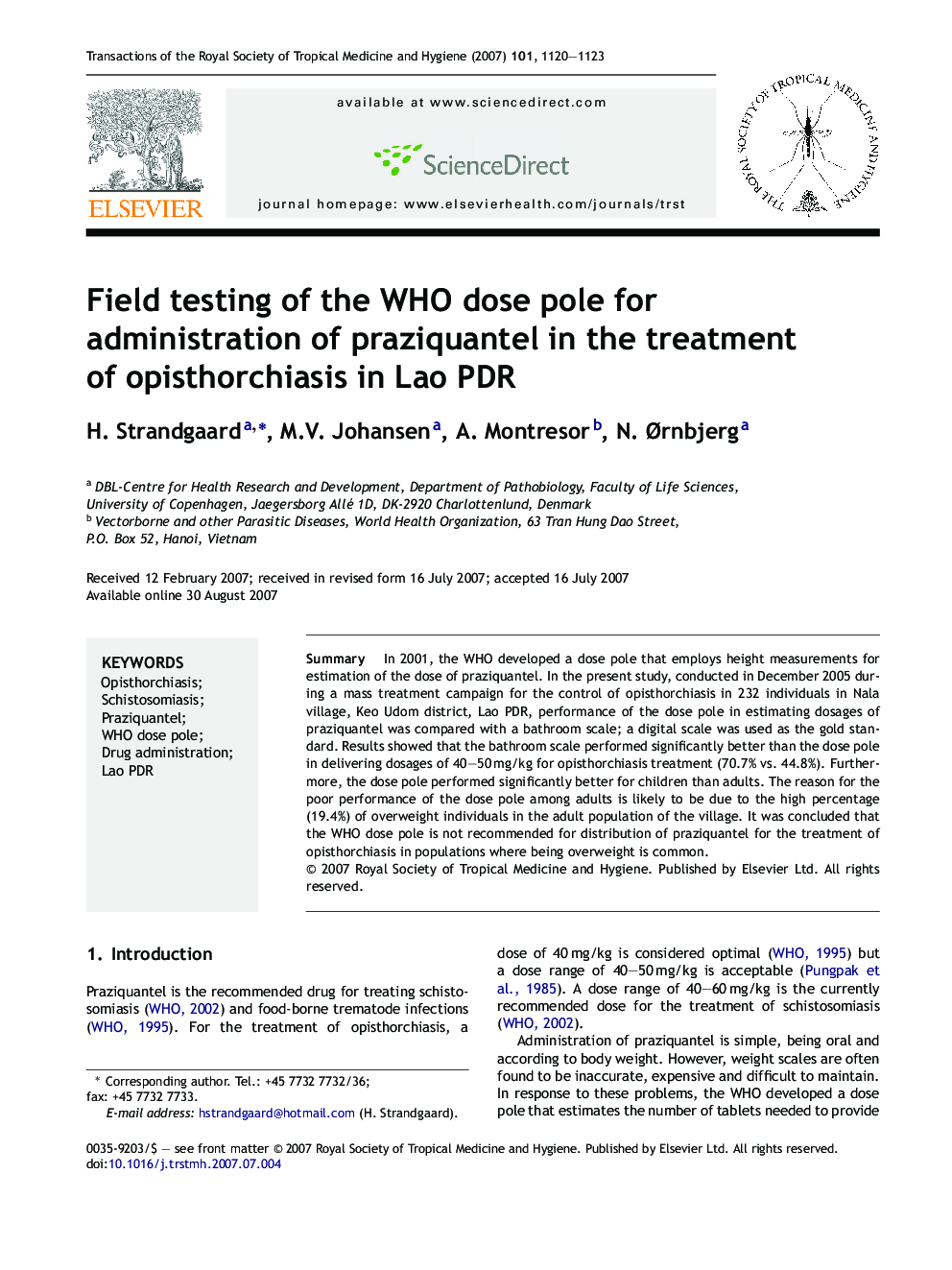| Article ID | Journal | Published Year | Pages | File Type |
|---|---|---|---|---|
| 3420996 | Transactions of the Royal Society of Tropical Medicine and Hygiene | 2007 | 4 Pages |
Abstract
In 2001, the WHO developed a dose pole that employs height measurements for estimation of the dose of praziquantel. In the present study, conducted in December 2005 during a mass treatment campaign for the control of opisthorchiasis in 232 individuals in Nala village, Keo Udom district, Lao PDR, performance of the dose pole in estimating dosages of praziquantel was compared with a bathroom scale; a digital scale was used as the gold standard. Results showed that the bathroom scale performed significantly better than the dose pole in delivering dosages of 40-50Â mg/kg for opisthorchiasis treatment (70.7% vs. 44.8%). Furthermore, the dose pole performed significantly better for children than adults. The reason for the poor performance of the dose pole among adults is likely to be due to the high percentage (19.4%) of overweight individuals in the adult population of the village. It was concluded that the WHO dose pole is not recommended for distribution of praziquantel for the treatment of opisthorchiasis in populations where being overweight is common.
Related Topics
Life Sciences
Immunology and Microbiology
Applied Microbiology and Biotechnology
Authors
H. Strandgaard, M.V. Johansen, A. Montresor, N. Ãrnbjerg,
